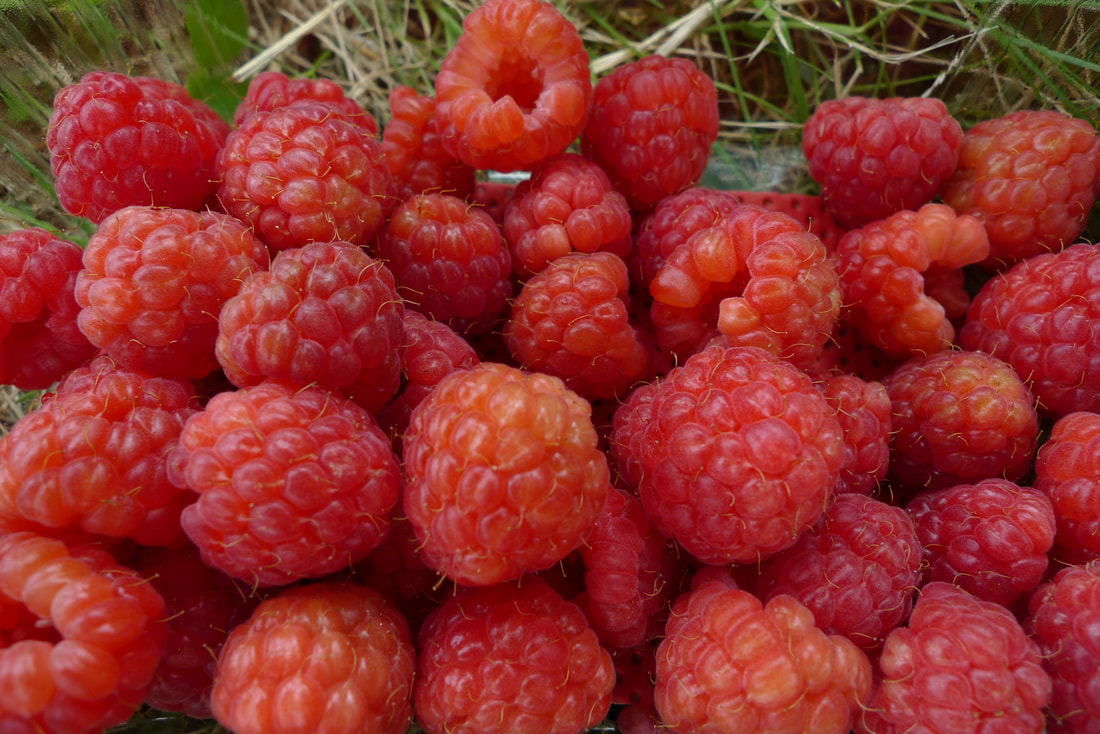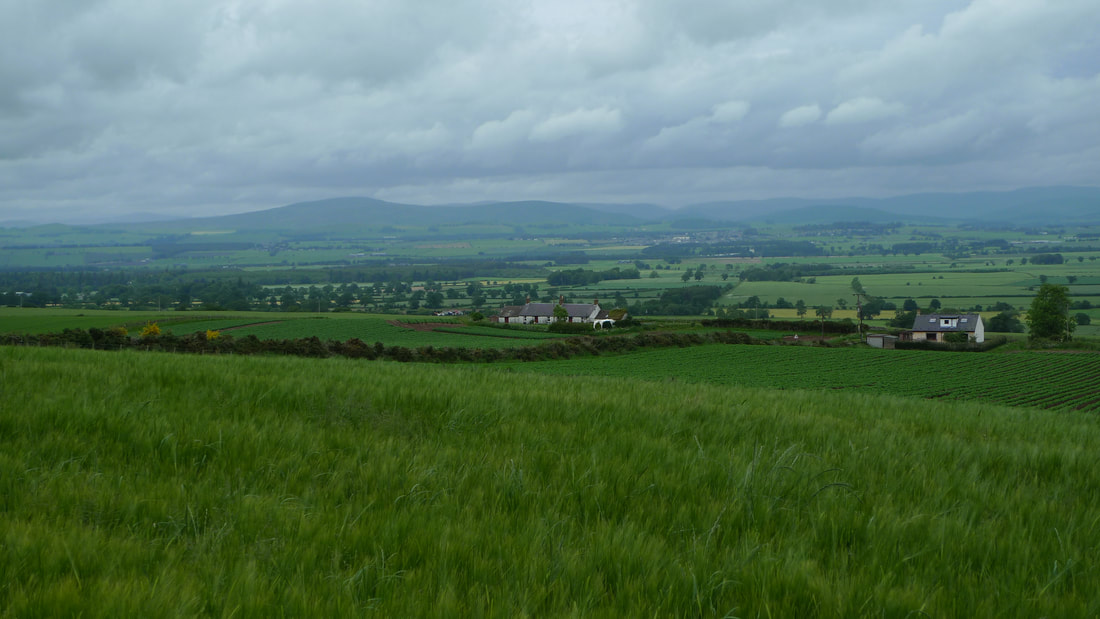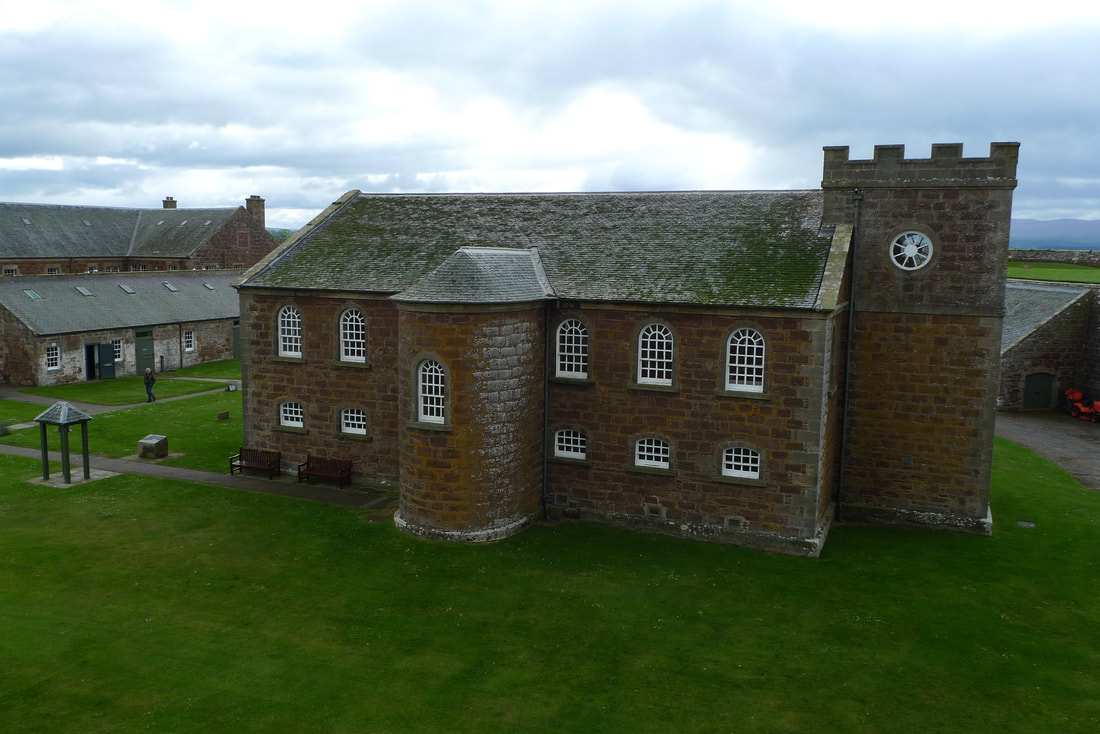|
Glamis Castle is in Angus, not far from Dundee and you can get there by following my cycling route.
Route highlights
Start at Arbroath station
Glamis Castle is only 12 miles from Dundee, however, there are a lot of busy roads in and around Dundee. That's why I recommend taking your bike on the train to Arbroath. Although this means a longer, 20 mile cycle, you will be on quieter roads. I experienced long stretches with no motor vehicles on the road.
A train to Arbroath takes around:
You should leave the station via Keptie Street. This is where you will find the Keptie Bakery. They are know for their award winning pies and scones. Take the B9127
Once you have left Arbroath it's pretty standard Scottish B-road scenery. It's farming country. It's pleasant, but nothing to get too excited about.
The one thing that stood out was the interesting place names- Hayhillock, Kirkbuddo, Whigstreet. The highest hill in the area is called Carrot Hill. Milton Haugh Farm Shop
After 6.5 miles you come to a farm shop, located inside a converted barn. It's worth stopping here to pick up some fresh, Angus, produce. I bought some delicious raspberries that oozed with sweet, luscious juiciness.
There's also a cafe serving good coffee, home baking, soups, baked potatoes and other meals. It's got roof beams, a wagon wheel chandelier and a mural with a farming scene of tractor in the fields and a happy family.
Inverarity Parish Church
Surounded by farmlands is this small white church of a type you can see in many parts of Scotland. It's about 7 miles from Milton Haugh Farm Shop. The church is Georgian architecture and was built in 1754. A simple design, but I love churches like this.
Inverarity has a couple of unusual features. The bell is from Holland, cast around 1614. There's a stained glass window that has three geese.
There are some interesting headstones at Inverarity. Look out for the elaborately carved stone that was purchased by a watchmaker in Forfar for his sister.
Mountain time
The final 6.7 miles of the route were the best part. This is where Angus really starts to show off. There are tree-lined sections of road that are so pretty you'll want them to last forever. It's the countryside roads that are in your cycling dreams. It's like a scene from a painting because it is so perfect.
Then the Cairngorms mountain range comes into view. This happens all of a sudden, in dramatic fashion. After miles of farming land the mountains appear on the horizon. It feels like the whole ride has been building up to this finale.
There is a bit of a climb to get to this point, but it is followed by a fast descent that will have you crying out for joy, or at least grinning all the way. As you race to the bottom your eyes are drawn to the mountain panorama.
Visiting Glamis Castle
Find out what there is to see and do in my blog about Glamis Castle
0 Comments
From the creators of Cycling to Save Money, Cycling to Save the Environment and Cycling to Burn Calories, we now present Cycling: A Way to Escape the Concrete Jungle. This age-old way of transportation, activity or sport if you will, offers a wealth of options for both absolute beginners and seasoned riders. One of them is mountain biking—a seriously demanding and exciting subdivision of cycling. Mountain biking is a sport involving cycling off-road, usually over rough and challenging terrain, not necessarily in the mountains. With no annoying honks, toxic fumes, unruly pedestrians, unleashed dogs and wild car doors popping out of nowhere, it’s clear why mountain biking is becoming increasingly popular. But can you just hop on your good ol’ commuter bike and hit the trails? Yes, you can, but it probably won’t be quite an enjoyable experience. Going beyond the asphalt takes special skill, technique and of course, equipment. Furthermore, getting ready for mountain biking takes a great deal of knowledge. Rigid, hardtail or full suspension? Trail, cross-country, enduro or downhill? Keep reading and get the lowdown. Intro Into the Styles of Mountain Biking Whether you’re looking to reconnect with nature, get competitive or get your adrenaline fix, mountain biking is welcoming of all enthusiasts with its four basic disciplines, including:
The most popular and beginner-friendly of the bunch, trail biking, involves a mixture of climbs, jumps and descents. Trail mountain cycles are designed to provide a perfect balance of weight and efficiency, so you can have an enjoyable experience going uphill, downhill or getting air time. If you’re looking for a versatile bike you can ride to work, around the city and in the mountains, you should look for a trail MTB. With pedalling performance and climbing prowess at its core, cross-country biking is rather demanding. If you’re looking to ride fast and don’t mind putting in hard work going uphill, this discipline may be right for you. Cross-country or XC mountain cycles are ultra-lightweight and built for efficiency and speed. If you’re into a lung-busting, leg-burning, calorie-torching experience, all-mountain/enduro biking may just be your cup of tea. Enduro MTBs are built to withstand steep descents while being light enough to help you conquer uphill challenges. A thrill-seeker, eh? Going downhill will certainly get your heart racing. If you have absolutely no interest in putting the pedal to the metal going uphill, you should consider this discipline. Downhill bikes are robust and durable, designed to handle steep, gnarly terrains and high speeds. Beware though, there’s not much versatility coming out of this type of MTB since it’s built to go down and down only. The Importance of Having the Right Bicycle for the Job Finding the right MTB for your needs is crucial for the overall experience. So, how many types of MTB are there? Depending on their suspension, when browsing or shopping for mountain cycles you’ll come across different types. Rigid Rigid mountain bikes, as the name implies, have no suspension. While that makes them easier to maintain and less expensive than their hardtail and full-suspension counterparts, they’re not the most popular choice in the world of mountain biking. The suspension lessens the impact and vibrations on bumpy trails allowing for greater rider comfort, balance and control. If you’re looking to get a rigid MTB, opt for wide, fat tyres that provide enough “cushioning” between the bumps and contact points. Hardtail Hardtail bikes feature a front suspension fork that absorbs the impact on the front wheel. Having no rear shocks allows for greater transfer of power between the pedal stroke and rear tire, making them a suitable choice for cross-country racing. Hardtail bikes are usually lightweight and easier to maintain than full-suspension bikes. They’re well suited for climbing and riding smooth trails and a great choice for beginners looking for a comfortable and versatile ride. Full-Suspension Full-suspension MTB bikes are unsurpassed in terms of comfort. With front and rear shocks to absorb the impact of roots, rocks and debris, you can enjoy increased stability and improved control on the gnarliest of terrains. Not only that full-suspension bikes are kinder to your body, but they’re also more forgiving in steep technical terrain and less likely to throw you over the bars. Don't Forget Proper Safety Gear Shredding rough trails and terrains is a high-risk sport requiring high-quality safety gear. In nature, you may be safe from dooring and hectic drivers, but that doesn’t mean that there aren’t other dangers that might throw you off balance and on the ground. When it comes to MTB safety gear, the helmet is unarguably the most important piece of equipment. A good MTB helmet should provide reliable multi-directional impact protection, as well as breathability and ventilation for long-lasting comfort. And since you don’t want your helmet moving around or getting in the way, it’s best to look for designs with adjustable straps to ensure a snug, custom fit. Depending on the adventure you're undertaking, you may need other protection items like torso armour, elbow pads, knee guards, goggles, padded gloves and shorts. Technical Clothing to Keep You Comfortable MTB clothing can make all the difference in terms of comfort and performance. When shopping for technical clothing, focus on freedom of movement, moisture-wicking properties, breathability and functionality. The perfect MTB outfit should be a combination of fit, feel and style, adding to your confidence and performance on the trail. Shopping Online vs. In-Store
Now that you have a better understanding of mountain bicycles and equipment, you can hit your local bike store or browse online to find the right two-wheeler for your needs and budget. Since buying a high-performance mountain bike can be quite an investment, here’s a bonus pro tip - buy a mountain bicycle online. With fewer layers preceding the end purchase, there’s less margin to be made, meaning you’ll probably get a better deal online. With that being said, it’s time to start your hunt for your new MTB. Fort George is awe inspiring. It's Scotland's most impressive military structure. With guns covering every approach and surrounded by thick walls it was designed to intimidate and impress. Fort George was built in the eighteenth century as a response to the Jacobite threat. It's about 8 miles from Nairn and you can spend the best part of a day exploring its 42 acres. Get to Fort George by bike Nairn is the nearest train station. From the station take the B9092 road to get to the fort. It's about 8 miles and the road is not busy. I cycled to Fort George from Cawdor Castle. There's a guide to this route on my blog. Entering the fort You cross a wooden bridge over a moat. When you are on the bridge have a good look. From here you get a great sense of the strength and power of the architecture. The walls look indestructible. This moat could be flooded with sea water to prevent an enemy getting inside. Once you cross that bridge there is a gun battery. It's a first line of defence and there is a formidable array of cannons. From here there is yet another bridge to take you further into the complex. This even has a little drawbridge as an extra defensive feature. History of the fort In 1745 the Jacobites destroyed the original Fort George in Inverness. The government decided to rebuild it on a spit of land at Ardresier. It was the biggest building project in Scotland at that time. Over 1000 soldiers and labourers helped to construct the fort. They built it to intimidate and impress. They wanted to send a clear message about who was in charge. The fort was never attacked. Elegant barracks Inside the walls of the fort there are handsome Georgian buildings that housed the barracks. These were designed by Robert Adam, one of Scotland's most renowned architects. I was amazed by the scale of these buildings. There is row upon row of them. They are all so elegant, not what I pictured a barracks to look like. In fact, they look more like stately homes. 1600 infanty could be accommodated in the barracks. The rooms with the larger windows were for the officers and offered more light and superior interior features, like window shutters. For the regular soldiers Fort George was relative luxury- most would have been used to living in tents. A soldier's life A testimonial from a Private Macmullan in 1846 gives an idea of what life was like at Fort George. He got up at 5am and had to make his bed, which "was rather a troublesome job" and took 15 minutes. The day was filled with drills, with breaks for meals, but the meat and potatoes for dinner was "the most wretched quality". He got a little bit of spare time when he would go for a walk. However, soldiers were not allowed to go more than 1 mile from the garrison. Defences The defensive structures are fascinating and give a sense of how difficult it would have been for an enemy to attack Fort George. The large number of canons on display shows the immense fire power that this place had. I was amazed by the canons on turntables, so that their positions could be changed to take aim at approaching ships. Dog cemetery and chapel Look out for the dog cemetery. There's a pyramid shaped headstone that was for a dog that was taken to Egypt with the regiment. The chapel has a squat appearance and the tower looks like it has been cut down. It's not the prettiest church, but I assume the design is to make it more robust. I guess that a taller tower would make it easier for enemy ships to target it. Inside the chapel the architecture is much more refined. I did not feel like I was in a military fort. It could easily be a church in a village or town. On the upper galleries there are doors that mark the private seating areas for officers. Bold, white lettering on the doors state who can sit here. There is even an area for 'Officers Ladies". One of the most distinctive features in the chapel is the stained glass window with a bagpipe playing angel. Exploring Fort George is one of Scotland's top experiences. It is incredible to think that a historic military structure of this vast scale survives to this day. Pretty much everything is how it was in the eighteenth century. This makes it easy to let your mind drift into the world of a government soldier and imagine what life was like here.
If you enjoyed it as much as I did let me know in the comments. There are many areas of Edinburgh where the urban design almost guarantees that car ownership will be the number one choice for people living there. I have been noticing this more and more as the planet grapples with the climate crisis. I think it is going to require an enormous change in design, planning and culture to reduce car dependency for such areas. I am going to take Spylaw Bank Road and the adjacent streets as an example of this situation. This opinion is based on my observations and thoughts when walking these streets. I am assuming that:
Here's a map of the area. And these are the reasons why I think it will be a challenge to get more people to use sustainable and active travel in this area. Poor state of pavements does not encourage walking Spylaw Bank Road has some pavements that are poorly maintained. They are gravel and not easy to walk on, particularly if you have a pram or wheelchair. Pavement parking can be common on these streets and that can force pedestrians to walk on the road. Just where the gravel pavement finishes, around number 48 Spylaw Bank Road, there is no pavement at all! You have to walk on the road here. And there are always parked cars on this part of the road, so you are forced to walk further out onto the road and constantly be aware of any approaching traffic. Luckily it is a quiet road, so the risk is low, but if we want people to walk places they shouldn't have to share the space with moving vehicles. The worst part of Splaw Bank Road for walking is the downhill section to Colinton Parish Church. There is no pavement, it is a narrow road and it has a blind corner. It feels unsafe to walk here because you are concerned about a vehicle suddenly approaching and not having enough time or space to get out the way. The design of these streets does not encourage people to walk. The disregard for the maintenance of some of the pavements feels like someone has thought there was no point because everyone who lives here uses a car. Limited access to safe cycling routes Streets like Spylaw Bank Road do make for good cycling because the low traffic volume makes them safe. Most people on a bike could feel quite comfortable exploring these streets, but what if you want to use a bike to go from this area to somewhere else? The area is surrounded by main roads that have much higher volumes of traffic and they don't have much in the way of cycling infrastructure. For example, Colinton Road has no cycling infrastructure. Lanark Road does have some protected cycle lanes, but not the full length of the road. You can get from here to the Water of Leith cycle path that leads to the Union Canal, but I've written previously about the inadequacies of the Union Canal as a cycle route for everyday journeys. You've also got to cycle that blind corner on Spylaw Bank Road to get to this route. It's also not realistic for many people to cycle back up that very steep hill to get home. Distance to everyday amenities If you want to get some basic groceries, like a pint of milk you could head to the Co-op on Bridge Road. Depending on where you live and how fast you can walk this can take no more than 15 minutes walking. However, it means you have the gravel pavements, no pavements and blind corners to contend with. You could go via the B701 to avoid walking this way, but this is a really unpleasant walk. Although there is a pavement you are walking alongside fast moving traffic. If you have children you probably wouldn't want to walk here. If you need a supermarket then walking to a supermarket from here is unlikely as it will take around 30 minutes versus 5 to 10 minutes by car. Cycling to these supermarkets is possible, but the lack of cycling infrastructure to these stores will put off many people even contemplating this. Inconvenient access to bus and rail services A long time ago there used to be more stations in this area. Now the closest station to Spylaw Bank Road and the surrounding streets is Kingsknowe. Depending on where you live in this area and your walking speed it could take you up to 18 minutes to get to this station. The train can get you to Edinburgh Waverley in about 13 minutes, but its an inconvenient hourly service. The 44 bus can get you to Princess Street in about 25 minutes. Depending on where you stay on Spylaw Bank Road or the surrounding streets it's probably a maximum of a 10 minute walk to get to the bus stop. That's a much more realistic prospect than relying on the train service, but if a resident of this area needs transport for an everyday journey like getting to the supermarket will the bus be their choice? If they own a car it means they can drive it straight into a parking space at the supermarket and not have to carry shopping bags for any great distance. The bus offers no such convenience. Home ownership goes hand in hand with car ownership On Spylaw Bank the average selling price of a house is around £1.2 million. The houses all appear to have driveways and space for cars. I assume that for most residents there is no financial barrier to car ownership. I don't think that people buy houses in areas like this and choose not to own a car. I might be wrong in these assumptions, but I walk this street and there are a lot of cars here. People who live in areas like this are perhaps more likely to be able to afford an electric vehicle. However, electric vehicles are not a sustainable solution. Homes are often marketed for their convenient location to major roads and a place to store a vehicle for free (driveway, garage or free on-street parking). In this area, the closeness of the city bypass is used as a selling point for homes. It is assumed that the potential buyer of these homes owns a car. How many people buy a home in areas like this based on convenient access to sustainable and active travel options? Civic leaders assuming electric vehicles are the answer At COP26 in Glasgow it was clear that electric vehicles are seen as the solution to reducing transport's contribution to the climate crisis. That's why I assume that areas like this in Edinburgh will not see any changes. I think that civic leaders believe that the residents will eventually switch to electric vehicles. The pavements will not be fixed, there will be no new cycling infrastructure, there will be no new shops and other amenities that can be more easily reached by walking. There will not be any schemes to encourage less car ownership. This is not the only part of Edinburgh like this Travel down any residential street in Edinburgh and there are parked cars. Even on streets that have good pavements it is clear that car is the number one choice for everyday journeys. Oxgangs Farm Avenue, is an example of a residential street with good pavements. I use this street frequently and rarely see people walking on these pavements and it is rammed with parked cars. There's a supermarket at 2 minute walk from this street, but I wonder how many people will still use a car for that trip? A colleague told me that they lived a 2 minute walk away from a supermarket, but often used their car because they would have too much shopping to carry. This blog illustrates the challenges of enabling active and sustainable travel in Edinburgh. If we want people to walk, cycle or take public transport for everyday journeys, like getting food shopping, there will need to be massive changes. Not only to infrastructure, but a total redesign of residential areas so that shops and services can easily be reached by short, safe, walking and cycling journeys. There also needs to be a massive shift away from a culture of car ownership and belief that electric vehicles are the answer to the climate crisis.
|
|









































